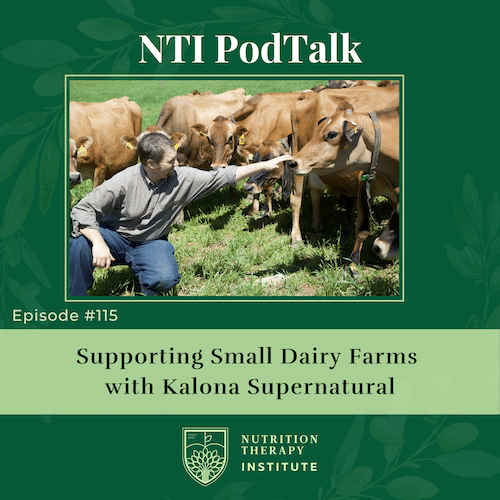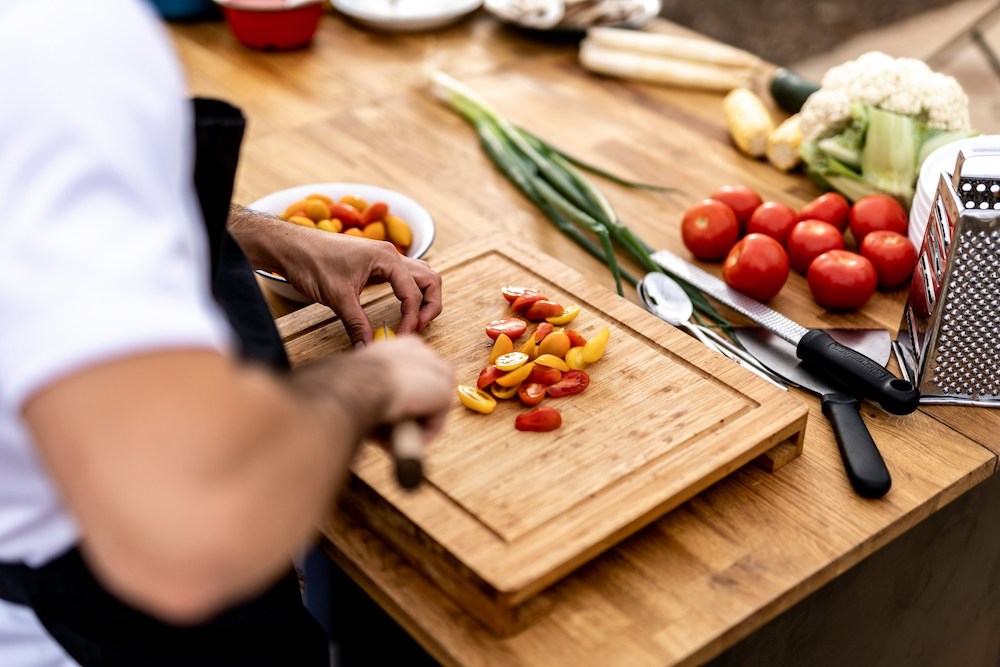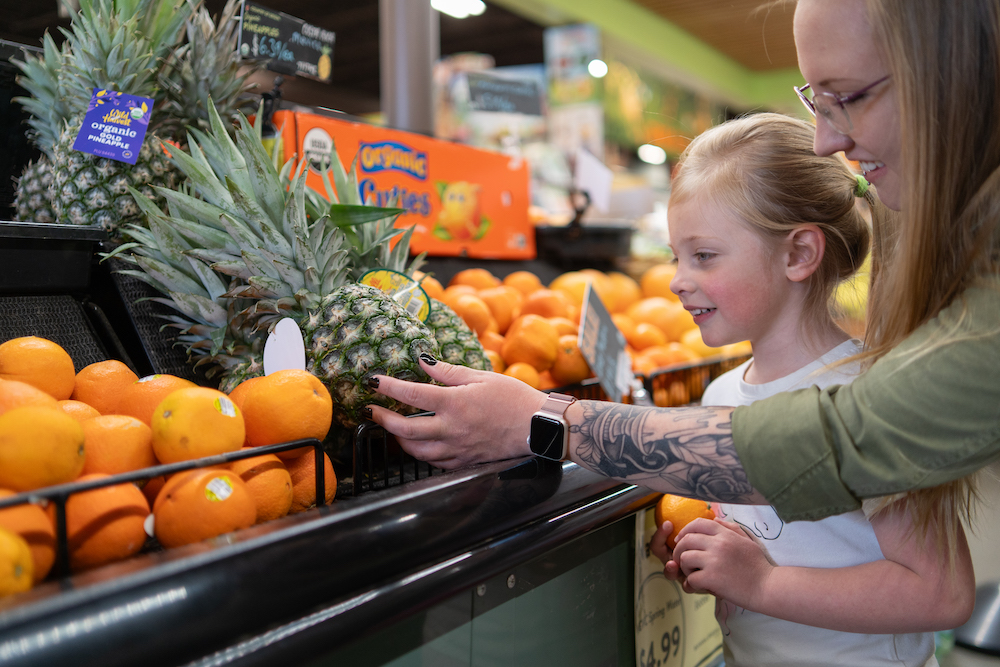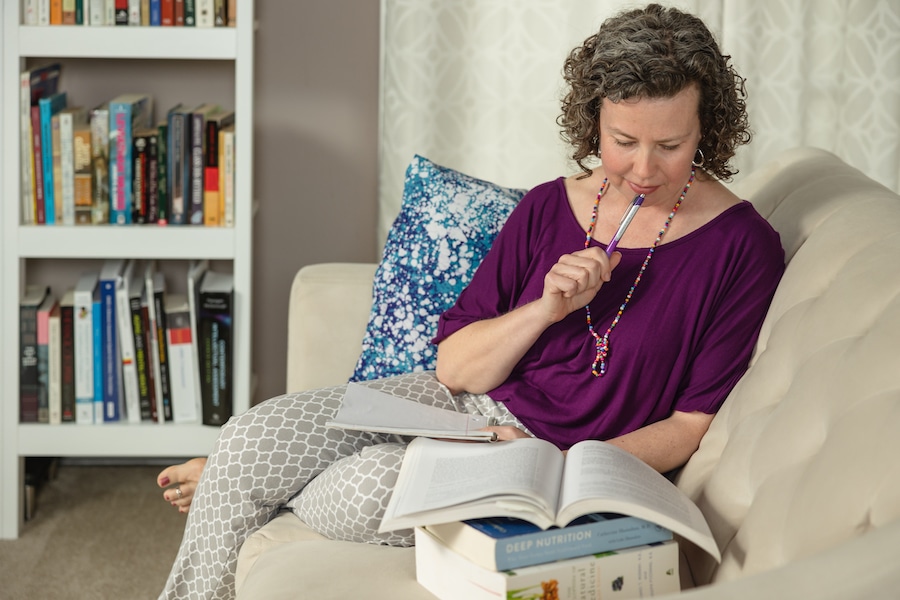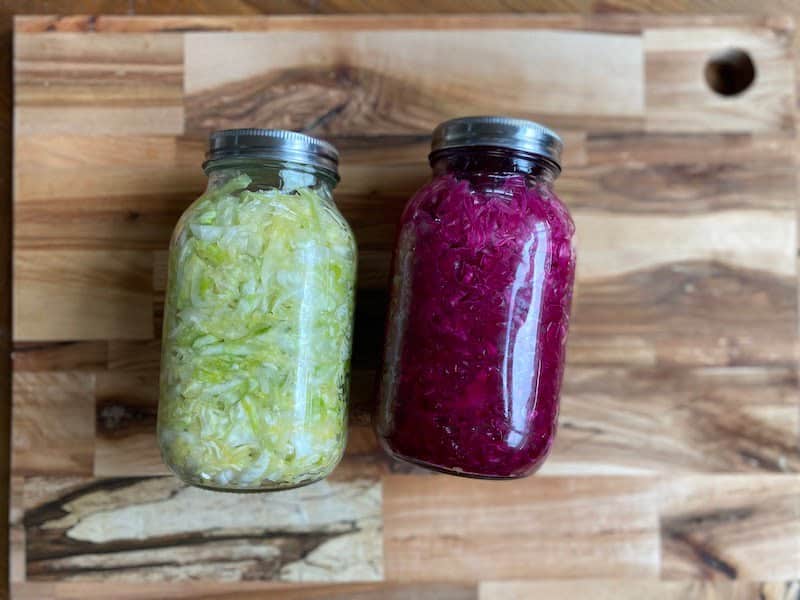
Share this post!
I think the first time I had sauerkraut was on a hot dog or brat when I was around 10 years old. I loved it. Who knows if it was properly fermented—I’ll get to that in a minute—but the tangy-ness and crunch of it was unbeatable. I grew up eating a Standard American Diet, so this was not a food I was eating daily or let’s be honest yearly, so it was a treat. I never really knew what it was or why it was supposedly good for you. Fast forward to my early twenties when my health was suffering, and I was introduced to sauerkraut as a “medicine.” That concept didn’t make sense to me at the time, but I trusted the process. Let’s be honest, I was also excited to incorporate this “specialty” item into my regular diet.
Early on when I was learning about fermented foods, I quickly learned there is such a thing as properly and improperly fermented sauerkraut. I typically bought my sauerkraut from the store, so I had to make sure there was no vinegar in the ingredients. Vinegar is never used in proper fermentation practices. It’s basically imitating a fermented flavor. The ingredients should just be cabbage, salt, spices (if desired), and maybe water. I was always intimidated to make homemade sauerkraut, but once I did, I stopped buying it from the store. It’s so simple!
Why We Love Homemade Sauerkraut
Probiotics for Gut Health
Gut health has become such a popular topic lately and for good reason. So many people have gut issues and struggle with their health. Good gut health is vital for overall health. It’s a key component of a healthy body. When the gut is in disarray, it can lead to a host of symptoms. Fermented foods are a great place to start to repopulate and heal the gut. Sauerkraut is an incredible superfood you can eat by itself or paired with a meal, especially if it’s homemade. It’s packed full of beneficial bacteria so your gut will thank you. When the gut is happy, the body is happy.
Sauerkraut has been around for thousands of years. Fermentation was used to preserve food when there was no refrigeration available, significantly extending the shelf-life of vegetables. These foods are incredible to have on hand during the winter months when fresh, in-season foods aren’t widely available. I love making large batches of homemade sauerkraut to enjoy all year long. It’s become a comfort food for me, especially in the colder months.
READ MORE >>> Enhancing Gut Health: Probiotics for the Microbiome
Easy and Versatile
Homemade sauerkraut is so easy to make! It took me around 20 minutes to prep. I used 2 heads of fresh cabbage, salt, and a bit of filtered water. The hardest part is waiting around 6 weeks or more for it to ferment. I love mine really sour, so I like to let it sit for a longer period of time.
Something I have always appreciated about cooking and eating whole foods is it takes time. In the world we live in, we want everything to be convenient. But I really believe that the slower the food takes to ferment, prepare, cook, rise, rest, whatever, the better and more nutrient-dense it will be. Fermentation takes a while, but the product you get at the end is so worth it and tastes so much better than store-bought. I encourage you to slow down in the kitchen and enjoy the process of nourishment.
This recipe can be used to ferment other veggies like carrots, jalapeños, cauliflower, green beans, radishes, turnips, garlic, garlic scapes, etc. You can add herbs like dill, parsley, basil, or spices like peppercorns and red pepper flakes. There are so many options to choose from!
Ingredients:
5 pounds of cabbage (Napa, red, green, other varieties – it doesn’t matter)
2 Tbsp of finely ground unrefined sea salt
Optional ingredients (dill, parsley, basil, peppercorns, red pepper flakes, or anything other herbs or spices you love!)
Instructions:
- Remove the tough outer leaves of the cabbage. Slice each cabbage into quarters and cut out the tough core that can reach from the cabbage’s base to its center. Slice the cabbage quarters into ribbons about 1/16 inch thick. The thinner you slice the cabbage, the more readily it will ferment.
- Toss the sliced cabbage and salt in a large mixing bowl. Leave the cabbage to macerate for 5 minutes, or until it softens and begins to release its juice. Knead the salt into the cabbage and allow it to further release its juice.
- Layer the salted cabbage about 1 cup at a time into your fermentation crock or jar, taking care to pack it very tightly as you add more. As you pack the cabbage, the juice it releases should rise up and cover it. Pour any juice remaining in your mixing bowl into the crock and weigh down the cabbage with a glass weight or sterilized stone to prevent any shreds from floating at the surface of the brine. If the brine from the cabbage doesn’t cover everything, add filtered water until everything is covered.
- Seal your crock or jar tightly and allow it to ferment at room temperature for at least 6 weeks before opening the crock to taste the sauerkraut. If you prefer a stronger sourness, allow the cabbage to continue fermenting until it reaches a sourness you prefer. Test it every week or so until it’s done to your liking. That may mean leaving your cabbage to ferment for at least 3 months. Once your sauerkraut achieves flavor you like, transfer it to smaller jars (if you used a large jar) and store in the refrigerator or root cellar for up to 9 months.
Recipe Adapted from the Nourished Kitchen
Learn to make your own ferments!
Natural Food Chef program courses also include segments on fermentation, sprouting, alternative baking, original root recipes to embody cultures’ natural healing properties, and therapeutic cooking practices. Learn how to create dishes that promote maximum health and vitality through specialty cooking techniques. Attend a live cooking demonstration to start your journey of unlocking food’s potential as a Natural Food Chef.
About the Author: Meghan McGee is a graduate of NTI’s Certified Natural Food Chef program as well as an Integrative Nutrition Health Coach. She believes food is the most powerful catalyst that brings people together. Sitting around a table, enjoying a nourishing meal with strangers or friends is her absolute favorite thing to do. Her mission is to inspire others to take control of their health. You can find Meghan’s personal chef and other services at megsnourishedkitchen.com.
Photo by Meghan McGee
Share this post!

